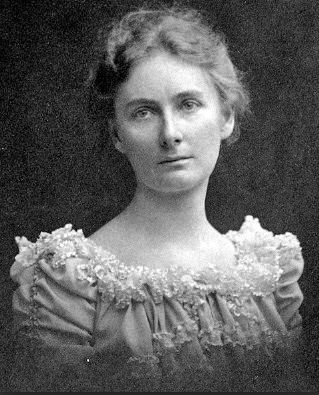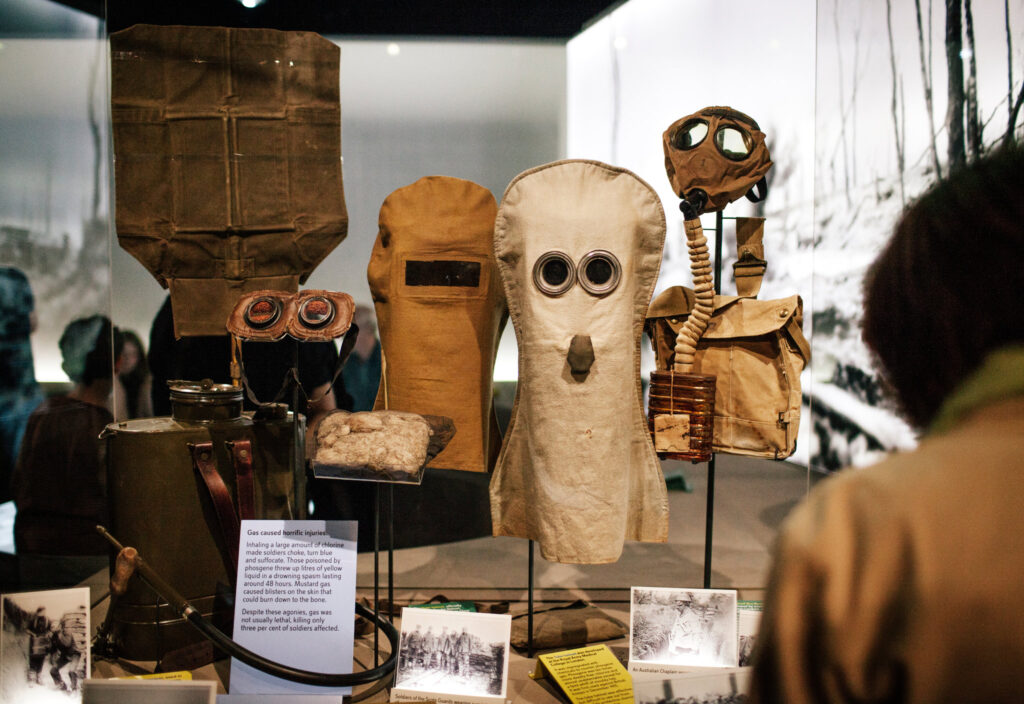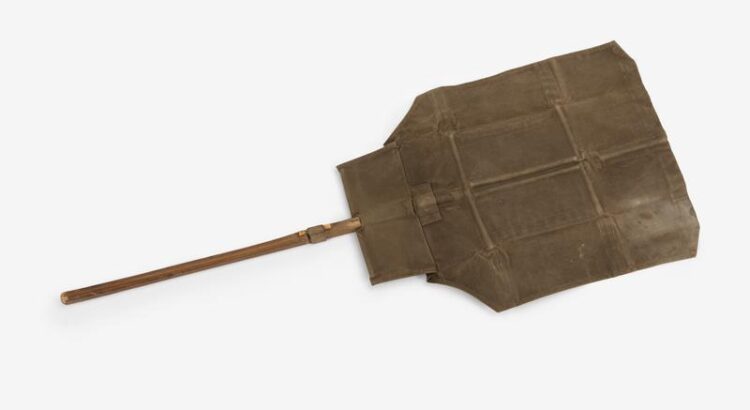It’s the 22nd of April, 1915 in Ypres. You’re a British soldier during the First World War and you’re looking in the direction of the enemy. It is a cloudy day, but below the rain clouds you see a cloud that is much closer to the ground, and it is moving towards you. Then, all of the sudden, you are choking and fighting for your life against a gas cloud. A new type of warfare has started: chemical warfare.
It’s a nasty new type of warfare and it poses questions like, how do we counter it? How can you protect someone from a weapon that is so sneaky and can get anywhere it wants, even deep into the trenches? Of course, we are quite familiar with solutions like gas masks or peeing in a handkerchief as protection against gas, but I wonder how many people are aware of the existence of the anti-gas fan. And it is as simple as it sounds. A fan made of waterproof canvas, stiffened by cane with a wooden handle to wave the gas out of trenches and mine craters after the fighting was done.
It was the image of those soldiers in Ypres that made British engineer Hertha Ayrton think of ways to help fight the gas.
“We have only to picture our men, after hours of hard fighting, perhaps wounded or already gassed, compelled, to remain in the open whatever the weather, with the remains of gas still there, to realise the vital importance of clearing every space, dug-out, and shelter the moment it was possible.”[1]
Ayrton, H.

And Hertha Ayrton wasn’t just some woman who felt compassion for British soldiers. Ayrton was a pioneering scholar, feminist and a brilliant inventor. Just to give some examples of why she was so highly regarded: she was the first woman to become a member of the Institution of Electrical Engineers in 1899 and seven years later she also became the first woman to receive the prestigious Hughes Medal for her research on ripples in sand and water and her work in the electric arc. However, coming up with a solution against gas attacks was a headscratcher, even for Ayrton. She did some tests in her own laboratory by burning brown paper and trying to find a way to clear the smoke as fast as possible. Eventually, she came up with the idea of the fan, and after one final test outside of her lab in Kensington, in the back garden of her fellow suffragette Ernestine Mills, the fan was ready to go. Ayrton brought her invention to the Invention Committee of the British Army General Headquarters. They, however, did not like this idea, and without even testing its value, they rejected it. But Ayrton was not so easily beaten. She kept knocking on the doors of prominent figures, such as commander in chief of the British army Douglas Haig, and even of prime minister Lloyd George himself. This clearly helped, as they wanted a test trial for Ayrton’s fans. The first test took place in 1916, but it didn’t go so well. The fans did not work when the wind was strong, so Ayrton had to make some changes in the design. In 1917, she produced a good working fan, which was approved by the British army. 104.000 fans were deployed to the front. From that point on, the fan got a new name: the Ayrton Flapper Fan.
Soldiers could now use this fan to clear any trench, shell hole or mine crater from poisonous gas within a matter of minutes, instead of having to wait for hours before it was safe for them to advance. In the clip below you can see how easily the fan could be used.
There are even some accounts of the fan being effective during gas attacks. And not even just to hold off the attack, but also to counterattack the enemy! This is highly unlikely, however, since a soldier would have had to fan harder than the wind, and not only that, he would have had to fan so hard that the gas would return some 100 yards. Even to hold off an attack with the fan would be difficult, since a soldier can only fan in one direction, so eventually the gas would surround him.
The fan did, however, make the life of a soldier somewhat easier, but unfortunately its success was short-lived. No, let me rephrase. Luckily, shortly after the production of the anti-gas fan it wasn’t needed anymore. The war came to an end on November the 11th in 1918 and so did the career of the Ayrton Flapper Fan. Any hope of a reappearance was lost when the use of gas in warfare was banned in the Geneva Gas Protocol of 1925. In the Second World War gas was only used sporadically in the Pacific, but the anti-gas fan wasn’t used there.
Sometime after the end of the First World War the retired fan found its way into the then newly founded Imperial War Museum. The anti-gas fan is now part of the permanent exhibition First World War Galleries at the IWM in London. This exhibition opened in 2014, one century after the beginning of the First World War. Here, the anti-gas fan is displayed in a glass case, next to gas masks, gas pumps and other objects related to chemical warfare.
The display case contains very little information on the fan, which I understand, since it’s not a very complicated device and its role in the war was minimal. Yet, I do think it’s a shame that Hertha Ayrton isn’t mentioned to some extent, because she is what I found most interesting about this object. How a civilian from outside of the military could invent equipment for the army, and, maybe more importantly, a woman in a world dominated by men, especially in times of war. Her expertise and persistence are quite remarkable and, in this day and age, we can see her as one of the women who helped pave the way for feminism and gender equality.

So let me make a suggestion to the IWM here: if you ever do an exhibition on women’s contributions to the First World War, please include the anti-gas fan again. But this time for a different reason.
Pieter Smit
[1] https://www.nature.com/articles/105612a0.pdf AYRTON, H. Anti-Gas Fans. Nature 105, 612 (1920).


